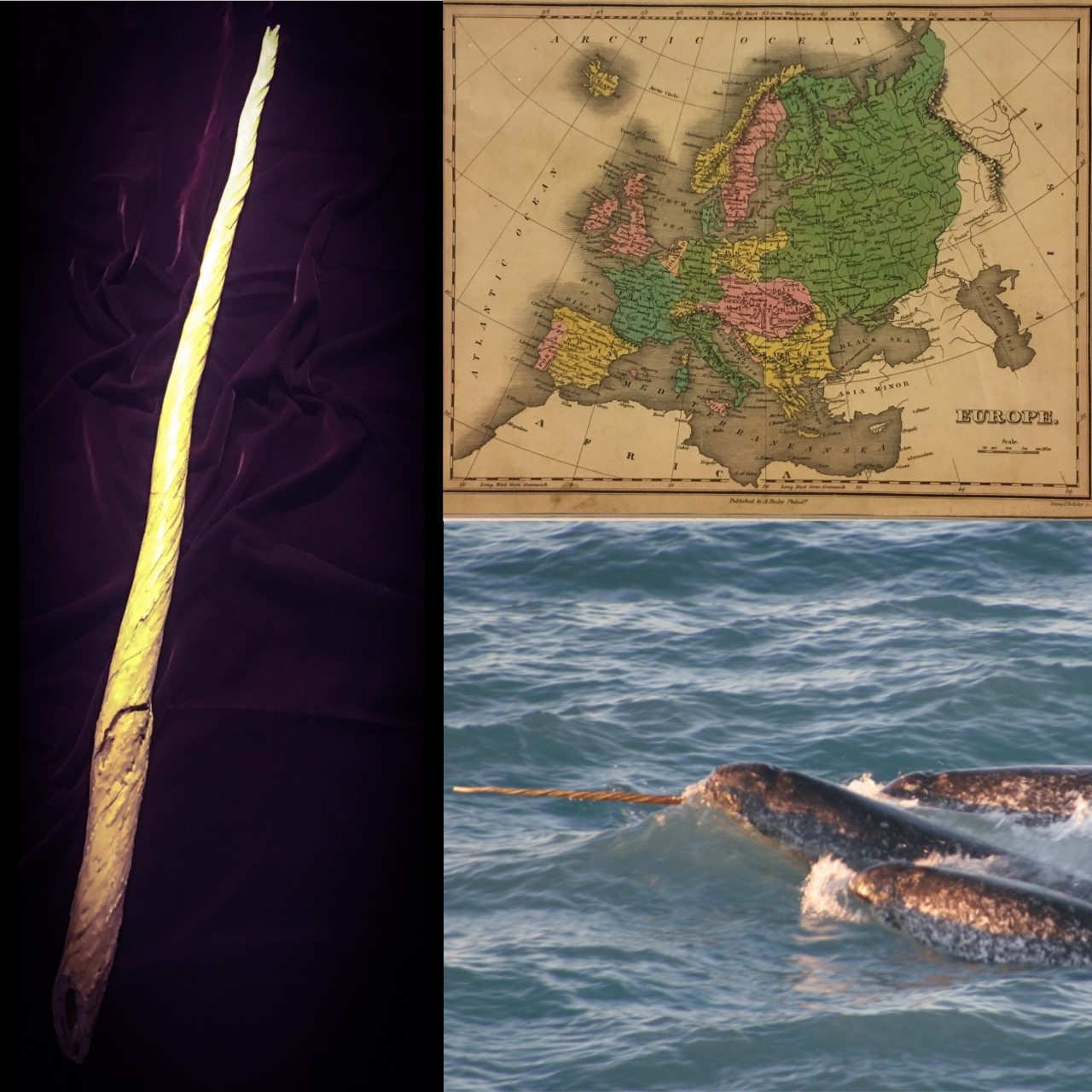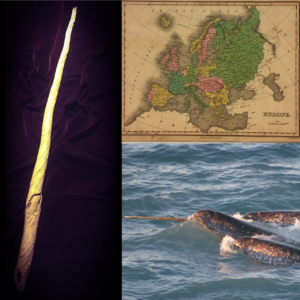Narwhal Tusk, biospecimen c. 1946, given by J. Kennedy Craig, Knoxville, in memory of his son, Capt. Brown Atkin Craig. 1946.7.1 “Europe,”Philadelphia, 1824, hand-colored engraving, map by Anthony Finley, engraving by Young and Delleker. Gift of Jeffery M. Leving, Founder, Fathers’ Rights. 2014.21.1
Narwhal tusks were staples of cabinets of curiosity. The teeth, which are also sensory organs of the male narwhal, were long believed to be unicorn horns. Though expeditions proved they were from Arctic whales, the myth persisted, and tusks continued to be sought as an antidote for poison and disease. Queen Elizabeth paid over ten thousand pounds for a Narwhal tusk in the seventeenth century—which was enough money at that time to build an entire castle. The Narwhal, or Monodon monoceros, lives in the icy waters of the Arctic. Even today, Narwhal tusks are illegally harvested and sold, and environmentalists warn the population is shrinking. Also pictured is an 1824 map of Europe showing the Arctic Ocean waters where the fascinating Narwhals swim, and a modern NOAA photograph of a pod of Narwhals swimming off Northern Canada by Dr. Kristin Laidre, Polar Science Center, UW NOAA/OAR/OER from the NOAA Photolib Library.

